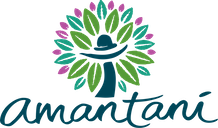Current situation of Ccorca in the midst of the COVID-19 crisis
Today, marks one month since the quarantine started and the people of Ccorca are still trying to adapt to these uncertain times. As it usually happens in Peru, many of the regulations set by the government do not take into account the challenges rural communities face for not being as developed as the country’s main cities. Ccorca is one of the rural communities that has to mitigate the obstacles that have risen as a result of the preventive measures of COVID-19.
Each day, at midday, the president Martin Vizcarra delivers a message to the country. This message is transmitted live on radio, television and social media. A large percentage of the population has access to this information through at least one of these channels, but this is not the case for the people of Ccorca. The majority of the news they receive are transmitted by radio, through the “Intiraymi” station. Nonetheless, the information in Quechua is only transmitted at certain times when it embraces the characteristic interculturality of the region. The rest of the time, the Quechua-speaking community remains in the dark; distanced from the information that is both important and extremely necessary during these times of crisis. Whilst in the rest of the country, the radio station “Radio Programas del Peru” (Radio Programmes of Peru) is one of the most popular and trustworthy ones, in Ccorca it is only accessible at 3:00 am. The rest of the day, the transmission isn’t clear enough and no one is able to understand the messages.
The lack of information has created serious confusion amongst the people of Ccorca regarding the virus. Even though the majority is aware of the safety measures they should be taking, most of them don’t fully understand what COVID-19 is, where it originated and why it’s so dangerous. In other words, most of them are protecting themselves from a virus without completely understanding what exactly they are preventing from. Regarding the young people we work with, our team is in constant communication with them to make sure they have access to all the information and are able to share it with their families. At the moment, one of our challenges is to face the new fears that our young people are feeling, including: What will happen once the quarantine is over? Will it be safe for us to continue with our studies? Will it be better to stay in our communities? For most of them, the decision to spend the quarantine back in their communities alongside their families came as a response to an inner need of feeling both safe and protected in these times of uncertainty.
In communities such as Ccorca, where national institutions haven’t yet been able to reduce the digital gap, the Quechua principle of “Ayni” (meaning reciprocity) makes an effort to fill the void. Each day, four out of the five families that do have access to cable television, as they are closer to the city, share the latest updates regarding the regulations on COVID-19. One of these people is Ronald, who listens to the president’s daily message and translates it to Quechua for the rest of the community to understand.
The education sector has also been affected by the quarantine. Even though the Ministry of Education has developed the programme “Aprendo en casa” (I learn at home) in record time so that children can continue to learn remotely, it has not taken into account the families that don’t have access to internet, radio and television. It’s also important to mention that, in many cases, parents aren’t equipped to serve as companions in their children’s academic journeys as most of them have had very limited schooling themselves. In some cases, only older siblings can help younger ones as a result of having received a full education thanks to their parents’ hard work and effort. Even though the programme is very successful in some areas of Peru, for communities such as Ccorca, the risk of falling behind in school is imminent. For the teachers in primary school this is also a very difficult problem to face, given that not many of them have internet access at home and can’t communicate with the rest of the team to find solutions.
Regarding secondary school, new challenges have also risen. Amantani managed to connect some families and teachers so that they could inform the students about the lessons that would be shared via radio, through the Santa Monica station. Nonetheless, this option wasn’t very successful. On the one hand, the station doesn’t reach every corner of the community and, on the other, many of the students would much rather help their families in farming related activities, instead of staying at home and listening to the radio. It’s also important to note that the challenges faced in these months only worsen the challenges that were already present in the school. One of them is the lack of a Director in the school. For now, the Unidad de Gestión Educativa Local (Local Education Management Unit) has designated teacher Isabel to fill in the position as director until the quarantine finishes; but the lack of continuity in this position causes even greater uncertainty.
In rural areas such as Ccorca, it’s mainly the community who gets organized to reduce the gaps in communications and in education. We must never forget that a community becomes empowered as a result of the parent´s desire to ensure their children receive an education, because of the motivation of the young people to become professionals and due to the collective conviction that an interconnected and better prepared country opens the doors to better opportunities. In rural areas where internet signal is a miracle and where education is a constant struggle instead of a right, it’s our responsibility to make these gaps visible in order to reduce them.
